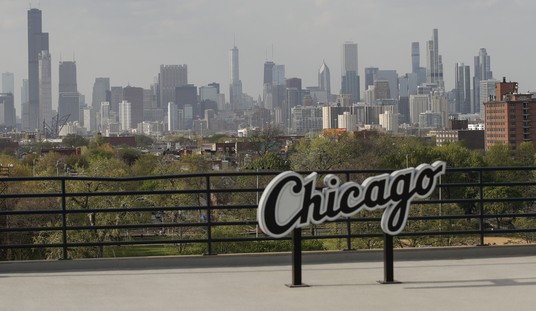If the past is prologue, the future of the new Republican majority may be short-lived. The GOP’s rapid return to minority status need not be, but it must learn the lessons of its past.
The numbers speak for themselves. Over the last century, the Democrats have controlled both houses of Congress 56 years compare to the Republican’s 26. Overall, the Democrats have held at least one chamber of Congress for 74 of the past 100 years.
Looking back over the history of the Republican Party, the shining moments (and longest times in leadership) have come when it boldly took up the banner of reform rather than holding up the white flag of resignation to the status quo. During these times, the GOP faced and addressed the nation’s challenges so directly and correctly that the American people rewarded it with the opportunity to lead for years, and even decades, at a time.
Formed in 1850s, the Republican Party took on the issue of slavery, when the other two parties of the day—Democrats and Whigs—would not. The GOP succeeded not only in its initial goal of blocking the growth of slavery, but went on to preside over its ultimate demise within a little over a decade of the Party’s genesis. The majority of Americans responded to this leadership by granting Republicans control of Congress (and the Presidency with two exceptions) for the rest of the 1800s and into the early 1900s.
After losing its way briefly during the 1910s, the Republican Party grabbed on to the reform banner once again and regained control of Congress in 1919. The GOP proceeded to pass the 19th Amendment, guaranteeing women the right to vote, and implemented policies to get the post World War I recession bound economy moving again. They cut taxes to a top rate of 25 percent and slashed the war-fattened federal budget in half. The economy roared back creating one of the greatest periods of expansion in American history with unemployment dropping from nearly 12 percent to essentially full employment. The federal government ran surpluses throughout the 1920s, and the Republicans stayed at the helm of leadership for its longest run in the past 100 years.
By the end of the decade, poor lending policies and rampant over-speculation in the stock market precipitated the crash of 1929 and subsequent Great Depression. The GOP response, unlike a decade before, was to raise taxes on the wealthiest Americans (from 25 to 63 percent) and grow the size of the federal budget by over 40 percent.
The Democrats retook control of Congress and the Presidency in the elections of 1931 and ’33. They can always do big government better: i.e. promise, tax and spend more. FDR and the new Congress launched the New Deal with predictable results. Over a six-year period, the National Debt doubled while unemployment remained at a stubborn 17 percent.
The Republicans offered very little by way of an alternative vision for nearly 50 years. Then came Ronald Reagan. With unemployment, inflation and interest rates all in double-digits and the economy stagnant in the early 80s, he turned the orthodoxy of decades on its head pronouncing, “In this present crisis, government is not the solution to the problem, government is the problem.” His prescription: 1) Cut taxes back to nearly 1920s levels, 2) Get rid of burdensome regulations, 3) Limit the growth of federal spending.
Reagan’s long coattails carried the GOP to control of the Senate for the first time since the 1950s and brought enough new members into the House that the Reagan Revolution could go forward. The economy soared to unprecedented heights growing an entire third larger, while creating 17 million new jobs, doubling tax revenue to the Treasury, and dropping the unemployment rate to five percent.
What the Reagan Revolution began in the 1980s, the Republican Revolution carried forward in the 90s. Keeping promises made in the Contract with America, the GOP passed tax cuts for working families and those who invested in the economy, welfare reform (establishing a work requirement) and limited the growth of federal spending to its lowest levels since World War II. The economy soared to even greater heights, with unemployment dropping to under 4 percent, while the federal government ran consecutive surpluses for the first time since the 1950s. The American people rewarded the GOP with control of Congress from the latter half of 90s and into the early 2000’s.
By the 2000s, the Republican Party had gone Washington. It is true the GOP enacted pro-growth tax cuts (and revenues rose to record levels), but it also increased spending more than any Congress since the 1970s. Only half of the nearly 100 percent increase in discretionary spending related to defense/security. Overall federal spending went from approximately $2 trillion in 2001 to $3 trillion per year by 2009.
Once again if the name of the game is big government, the Democrats can always do it better and took back control of Congress and the Presidency in the elections of ’06 and ’08 and gave us $1 trillion+ deficits and ObamaCare.
A majority of the American electorate have now rejected big government and given the GOP control of the Senate and the largest majority in the House since the 1920s. All eyes are now on the Republican Party. The challenges our nation faces require a bold, reform agenda: 1) Deficits still hover at a half a trillion dollars; 2) Federal entitlements in their current configuration will bankrupt the nation; 3) ObamaCare is causing inestimable harm to the nation’s healthcare system; 4) A complex tax regime pegs the United States at the highest corporate taxes in the world; and 5) Real unemployment is still in double-digits.
Recommended
Will the Republican Party take up the banner of reformation and boldly face the issues of the day or wave the white flag of resignation to the status quo? The answer to this question offers the best glimpse into how long the American people will give it the privilege to lead.
























Join the conversation as a VIP Member